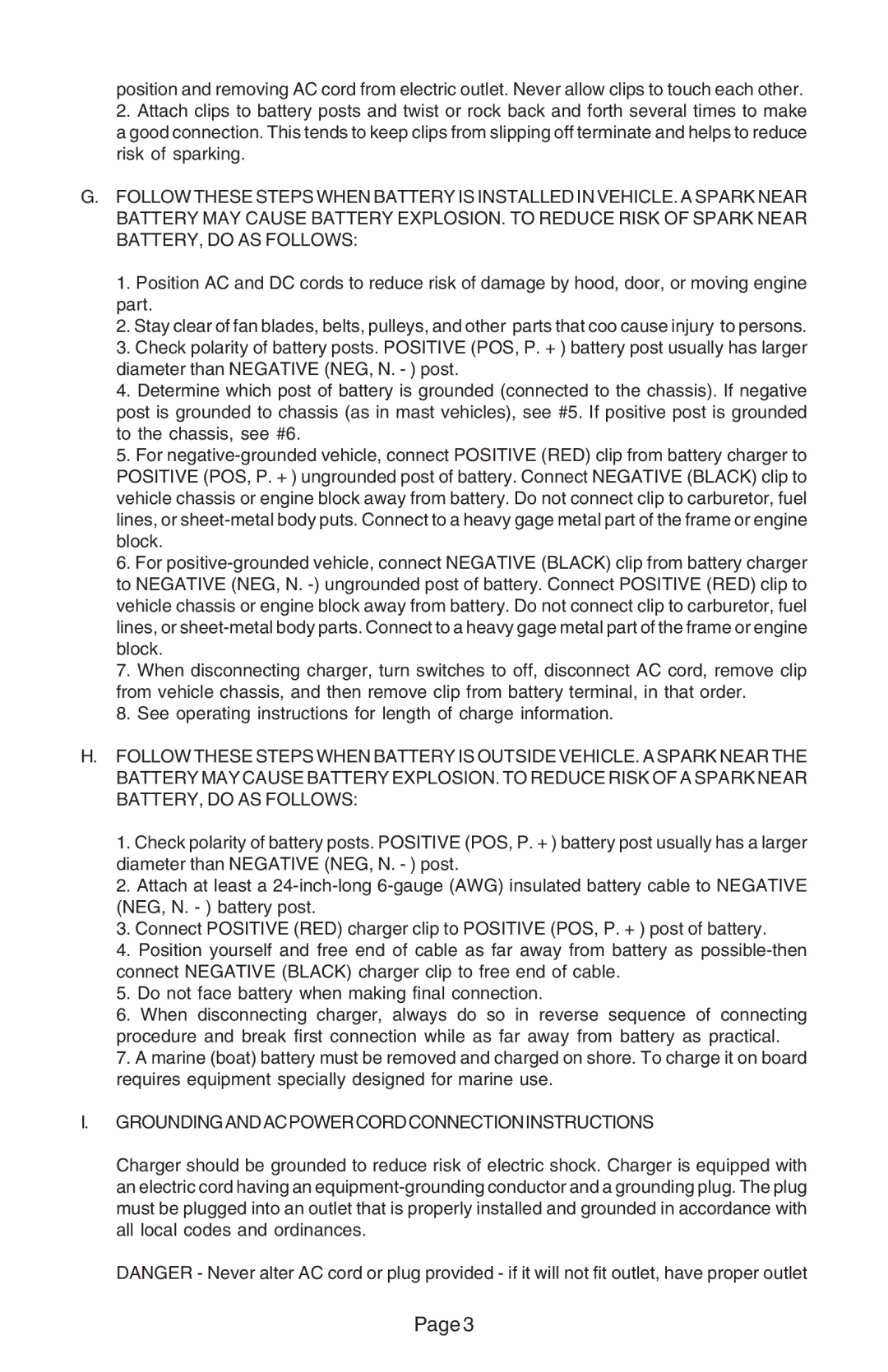position and removing AC cord from electric outlet. Never allow clips to touch each other.
2.Attach clips to battery posts and twist or rock back and forth several times to make a good connection. This tends to keep clips from slipping off terminate and helps to reduce risk of sparking.
G.FOLLOW THESE STEPS WHEN BATTERY IS INSTALLED IN VEHICLE. A SPARK NEAR BATTERY MAY CAUSE BATTERY EXPLOSION. TO REDUCE RISK OF SPARK NEAR BATTERY, DO AS FOLLOWS:
1.Position AC and DC cords to reduce risk of damage by hood, door, or moving engine part.
2.Stay clear of fan blades, belts, pulleys, and other parts that coo cause injury to persons.
3.Check polarity of battery posts. POSITIVE (POS, P. + ) battery post usually has larger diameter than NEGATIVE (NEG, N. - ) post.
4.Determine which post of battery is grounded (connected to the chassis). If negative post is grounded to chassis (as in mast vehicles), see #5. If positive post is grounded to the chassis, see #6.
5.For
6.For
7.When disconnecting charger, turn switches to off, disconnect AC cord, remove clip from vehicle chassis, and then remove clip from battery terminal, in that order.
8.See operating instructions for length of charge information.
H.FOLLOW THESE STEPS WHEN BATTERY IS OUTSIDE VEHICLE. A SPARK NEAR THE BATTERY MAY CAUSE BATTERY EXPLOSION. TO REDUCE RISK OF A SPARK NEAR BATTERY, DO AS FOLLOWS:
1.Check polarity of battery posts. POSITIVE (POS, P. + ) battery post usually has a larger diameter than NEGATIVE (NEG, N. - ) post.
2.Attach at least a
3.Connect POSITIVE (RED) charger clip to POSITIVE (POS, P. + ) post of battery.
4.Position yourself and free end of cable as far away from battery as
5.Do not face battery when making final connection.
6.When disconnecting charger, always do so in reverse sequence of connecting procedure and break first connection while as far away from battery as practical.
7.A marine (boat) battery must be removed and charged on shore. To charge it on board requires equipment specially designed for marine use.
I.GROUNDINGANDACPOWERCORDCONNECTIONINSTRUCTIONS
Charger should be grounded to reduce risk of electric shock. Charger is equipped with an electric cord having an
DANGER - Never alter AC cord or plug provided - if it will not fit outlet, have proper outlet
Page 3
